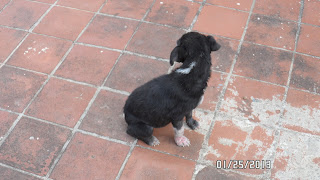 |
A
moment of honesty here, I don't suffer children well for any length
of time. I am child-less by choice in my personal life, and while I
have many, many younger relatives, nieces and nephews produced by my
three sisters, as well as great nieces and nephews produced by my
nephews and nieces, I prefer living with dogs instead. I love my
young relatives, but I love sending them home to their parents even
better, when I've tired of their company.
My
siblings and friends who are only now enjoying the freedom that I
have always had, seem to act as though being happy your kids are no
longer in the house, is a guilty pleasure, rather than the nature of
things. In other words, you have kids, they grow up and they leave
and you get your sanity and life back. I don't see any reason to
feel guilty about that at all. It is the way the universe works,
right? So while, I do like little people, my philosophy has always
been, if you choose, give birth, raise them until they are aged 3,
then send them off to boarding school until they turn 18, when it is
time for college. Painless child rearing, but not what a “parent”
should do. I fully admit that I'm not “parent” material. Just
wish others would be more honest with themselves instead of treating
their offspring like an acquisition, a designer handbag or something
that matches their latest pair of designer jeans.
At
least publicly, the children of Cuba seemed well loved and cared for.
Many of the cultural events that we attended in Cuba were put on by
children, students mainly from what we in the US would consider
middle school. Since I've spent my entire life avoiding organized
kid stuff, Disney world performances, I was not exactly thrilled, but
resolved to put on a good face and enjoy the moment.
I
have to admit that I was pleasantly surprised at the various
performances and programs we observed and took part. I had fun,
actually. We were treated to song and dance and instrumental music,
from a quintet of young women singing an old black gospel hymn to
welcome us, to an orchestra made up entirely of guitars. We met the
quintet at a school with a music and performance curriculum. The
students were selected from all over the city to sharpen their skills
with the future intent of teaching or performing. The overall intent
is to preserve Cuban culture and pass it on. The school, like all
schools was state run and also free for students and parents.
The
Orquestra de Guitaras was a neighborhood culture club, so to speak.
State sponsored but put together as a result of a neighborhood
banding together to teach, and provide practice and performance
space and a built in audience. For instance, the only requirement to
joining the orchestra was that the child have a guitar. The lessons
are free, done by volunteer directors who teach the kids to play the
instrument. in three weeks. Most of them don't read music so all
songs are memorized. The special performance was nothing short of
amazing.
Without
exception, even the street urchins, who begged for money or whatever
we would give them, were squeaky clean and didn't smell, as Marie
remarked. They were pushy but polite as they hustled us. After all,
we were tourists there with spending money to burn. Our tour guides
cautioned us on the first day that giving to the people was our
choice. We needn't feel guilty because all children in Cuba had state
provided free health care, free food, and free schooling.
I
noticed that the kids always asked for money, but the adults always
asked for items like pens or soap or paper. We were told that this
was merely a conversation starter in the hopes of getting other items
that could in turn be sold on the street for a high price. I ended
up giving away small items such as my extra pens and pads of paper
and the soaps, shampoos and other courtesy toiletries from the hotel.
I was traveling without my computer and had loaded up on writing
materials which became dead weight when it became apparent that
writing longhand and pictures proved difficult.
There
was no quiet time built into the tour to pause and write, or to write
at night, so I resorted to mental notes, scribbled notes and many
many pictures to jolt my remembrance for when I started to write as I
am doing now, after I've returned from my adventure. In my past
professional life, I was a news reporter during the time when cell
phone cameras and recorders as well as other modern conveniences for
documenting life, did not exist. I had to rely on my camera and my
memory in order to get the story and get it right. I found and was
pleasantly surprised that I have not lost that skill in my older
years. My powers of observation are still intact and functioning
properly.
More
to come....


































